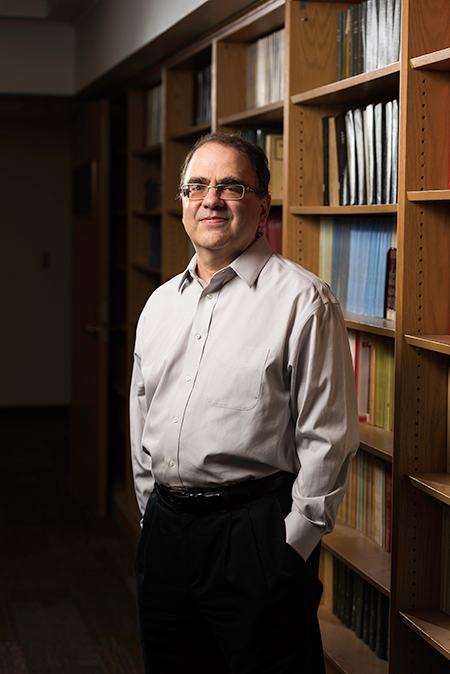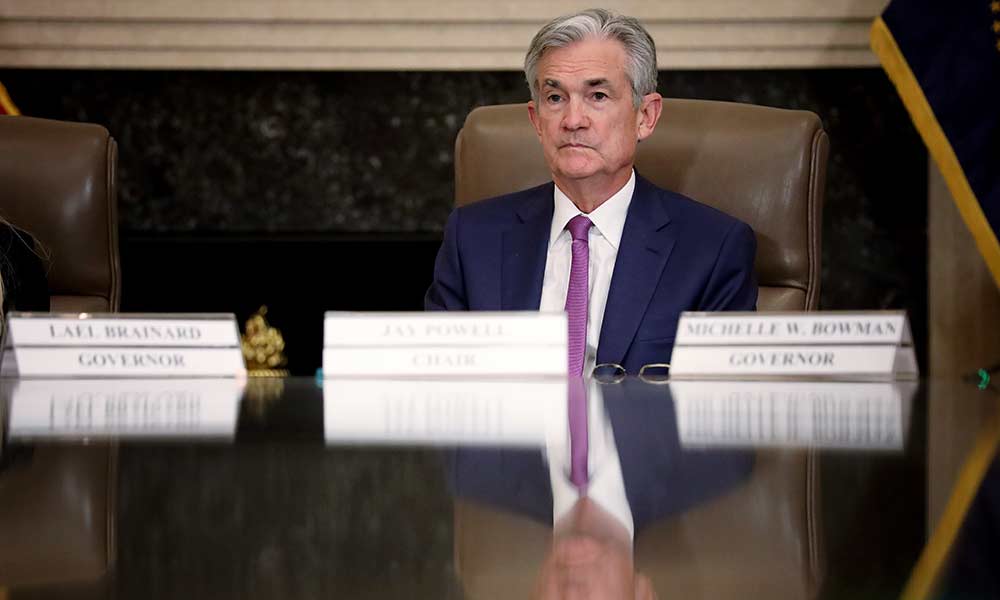The Federal Reserve’s policy makers are finishing up a review of their long-term strategies, and Narayana Kocherlakota, the Lionel W. McKenzie Professor of Economics at the University of Rochester, expects to be disappointed.
Kocherlakota, a former president of the Federal Reserve Bank of Minneapolis, says the Federal Open Market Committee is signaling that it will not make any changes to a policy statement it adopted eight years ago that established a framework and tools for meeting inflation and unemployment goals. Leaving the statement intact would be “completely absurd,” Kocherlakota says, contending that “the committee has proven to be ineffective at achieving its macroeconomic objectives for well over a dozen years.”

The Federal Open Market Committee holds its final meeting of the year on December 10 and 11. The first order of business is interest rates. Will there be a change?
I don’t expect any change in December. The committee is sending a message that it’s in pause mode with respect to interest rates. Two months ago, I worried that such a signal would cause disruptions in the financial markets, but they were able to do that without creating any downward movements in stock prices. Once in pause mode, the committee would have to see significant information that would lead them to cut or raise rates. Either way, I continue to believe that they’re much more likely to cut rates going forward than to raise them.
If not expecting any change in December, does that mean the economic indicators are pretty much the same?
It means the committee is comfortable with where the economy is and where they expect it to go, both in terms of unemployment and inflation. Unemployment remains low and the committee’s forecast is that it will continue to be low. As for inflation, they expect to get back to their 2 percent target in roughly two years. There were concerns that motivated them to cut rates earlier this year. One was downside risks to the economy and the other was recessionary risk. Neither concern seems to be as material to them as they were back in July.
If the Fed isn’t going to change interest rates, what will it be doing at the meeting?
In January 2012, the Fed released a one-page framework called a “Statement on Longer-Run Goals and Monetary Policy Strategy,” which included a quantitative observation that price stability means 2 percent inflation. That didn’t mean they’d try to hit 2 percent inflation every day. But over the long run, that was the level of inflation they felt was congruent with a healthy economy. Unemployment was trickier to define. The committee said there are a lot of factors that move the long-run unemployment rate around, but ‘we’ll keep you posted on what we think that long-run unemployment rate is.’ They communicate that information on a regular basis.
This year, the committee has been conducting a review of the framework and the tools available for meeting the objectives laid out in the document. After eight years now, this is a natural time to revisit the question, since we’re not in the middle of a recession and we have a healthy economy. I expect the FOMC to continue their discussion of that review at this meeting.
There are a couple of items on the table. One is a promise to make up for inflation shortfalls. We’ve had inflation run below the 2 percent target almost since January 2012. Some people have suggested the committee use makeup strategies. If inflation runs below 2 percent for an extended period, it can be made up by running above 2 percent for an equivalent period. That means we’d actually hit 2 percent on average, even if we never achieve 2 percent itself. There’s also the question of tools. The committee uses interest rates and asset buying to help reach its monetary goals.
The committee has not completed its review, but I’m quite worried about where it seems likely to end up. In a variety of communications, the committee has suggested a great deal of satisfaction with its current framework and tools. I find that completely absurd.
In my view, any neutral observer has to conclude that the last recession and “recovery” were significant failures for the committee. The unemployment rate was above 5 percent for nearly eight years. Even now, over a decade after the end of the Great Recession, we continue to be running below target inflation.
Basically, the committee has been highly ineffective at achieving its macroeconomic objectives for well over a dozen years. And—because interest rates are already so low—the FOMC has a lot less firepower now than it did in 2007. This lack of firepower means the committee is likely to fare even worse—possibly much worse—in confronting the next recessionary shock. The idea that the committee views this as a good situation is completely irresponsible. It’s much like a homeowner who decides against fixing the roof because the sun is shining. I’m very disappointed.
Here’s an example of what I mean. One tool the committee has never used is negative interest rates. That’s where financial institutions are charged for storing excess reserves in the central bank. It’s a way to encourage banks to lend money and, in turn, help grow the economy. The committee seemed to agree at its last meeting that negative interest rates would not be used in the next recession.
Do you think that’s a mistake?
It’s a complete error to claim that they’re off the table, because the FOMC will almost certainly think about using negative rates if there is a severe recession. And now the FOMC has ensured that any implementation of negative rates will be seen as a signal that things are really bad. That signal can only make a recession even worse. As they say in tennis, it’s an unforced error.
Are there any other changes you’d support if you were on the committee?
I’d be pushing to allow makeup strategies, so that if we undershoot on the inflation target for three or four years, we’d commit to making up for that miss. That means if inflation is at 1 ½ percent for four years, the committee would aim for 2 ½ percent over the succeeding four years.
If the committee can’t hit its inflation target of 2 percent, what would make anyone think they could hit a target of 2 ½?
One of the reasons you can’t hit 2 percent is that people never expected inflation to go above 2. So if you’re seen as willing to go above that mark, then more people would think the economy would naturally settle at 2 percent. People in the financial markets now think of 2 percent as the Fed’s ceiling.
In a sense, the committee no longer has interest rates as a tool in the event of a recession, correct? With interest rates already low, they can’t really be cut very much to boost the economy.
Yes, that’s true. But there’s a better way to frame it. The committee is keeping rates where they perceive they need to be in order to achieve its goals. Indeed, interest rates still aren’t low enough because inflation continues to be below target. The economy has changed in fundamental ways over the last 15 years. If you go back to 2005, the inflation target would have been something like 5 ½ percent. Now it’s something below 2. That change is the lack of capacity that’s available to the Federal Reserve in case a recession happens.
And that supports your argument for negative rates.
Absolutely. But the more general problem is that the committee seems unduly sanguine about its ability to deal with adverse shocks. I know that it’s difficult for institutions to recognize poor performance and make needed changes in response. But I’m disappointed that the Fed seems disinclined to do so.





